18:00-21:00 Tuesday 25th August, 2015
ECVP2015 Illusion Parade @Camp & Furnace (67 Greenland St, Liverpool, L1 0BY)
Spatial color mixture and its relevance to the Munker illusion
Akiyoshi Kitaoka (Ritsumaikan University, Kyoto Japan)
since August 18, 2015 (modified April 13, 2020) poster (MS-WORD doc 30MB)
Abstract: Spatial color mixture is known as the principle of RGB displays or of pointillism. First, I classify two types of spatial color mixture. One is additive color mixture and the other is subtractive one. The former consists of red, green and blue on the black background, while the latter is made up of cyan, magenta and yellow on the white background. For both types, it is possible to reduce three elemental colors to two colors, e.g. a combination of red and cyan. In this condition, a red object is represented with red and black for the additive color mixture or with red and white for the subtractive color mixture. Spatial color mixture is observed even if patterns of elemental colors are distinguishable. Here I will demonstrate its possible relevance to a strong color illusion called the Munker illusion because of similarity of images or spatial frequency responses.
Spatial color mixture: additive color mixture (top) and subtractive one (bottom)

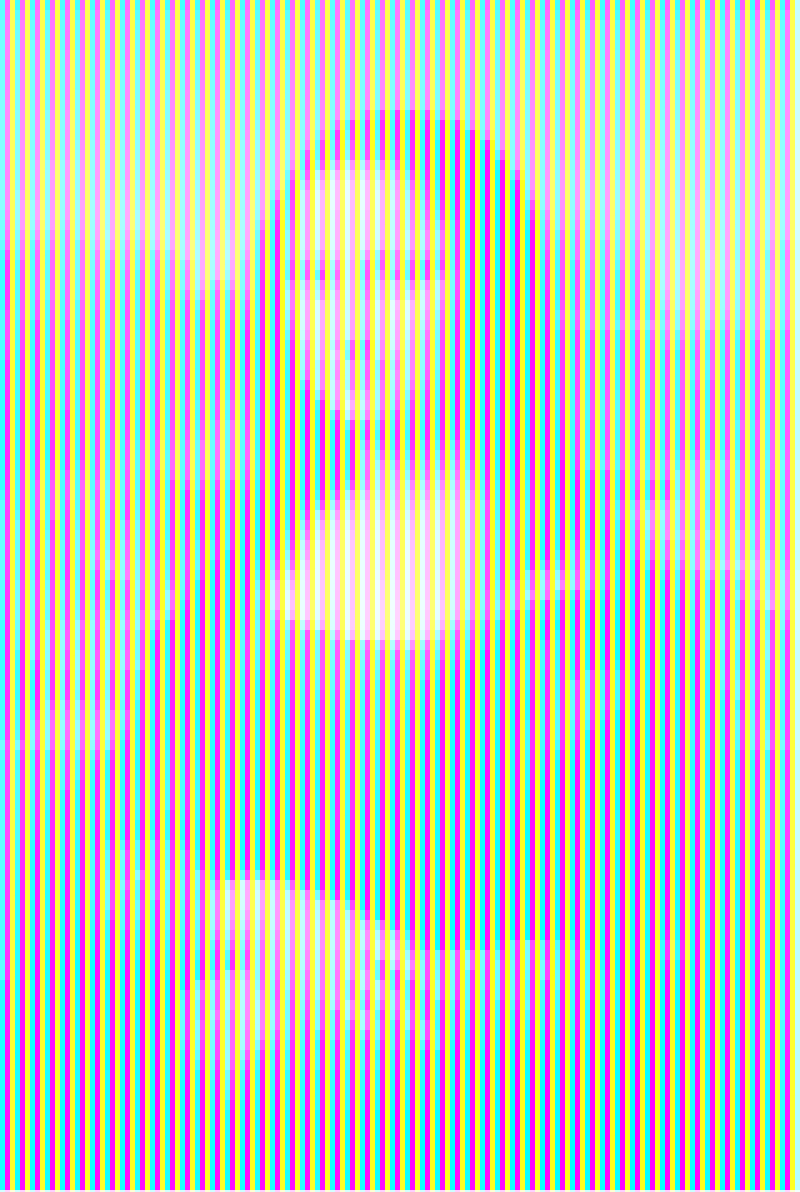
Spatial color mixture: additive color mixture (left) and subtractive one (right)
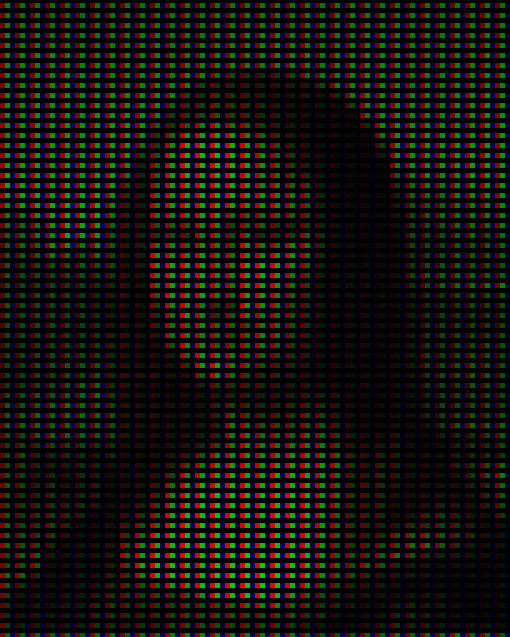

Spatial color mixture: additive color mixture (left) and subtractive one (right)


Munker illusion: the left heart appears to be red-purple whereas the right one orange, though they are the same red.
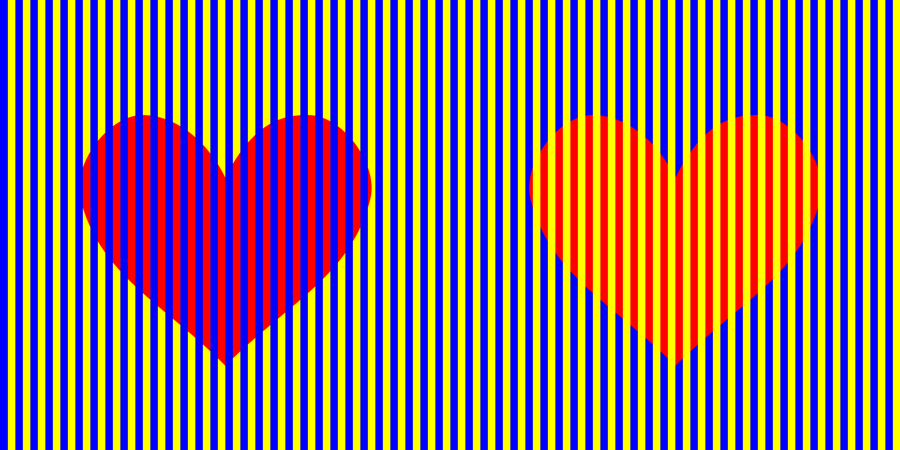
Spatial color mixture with three colors: additive color mixture (left) and subtractive one (right)
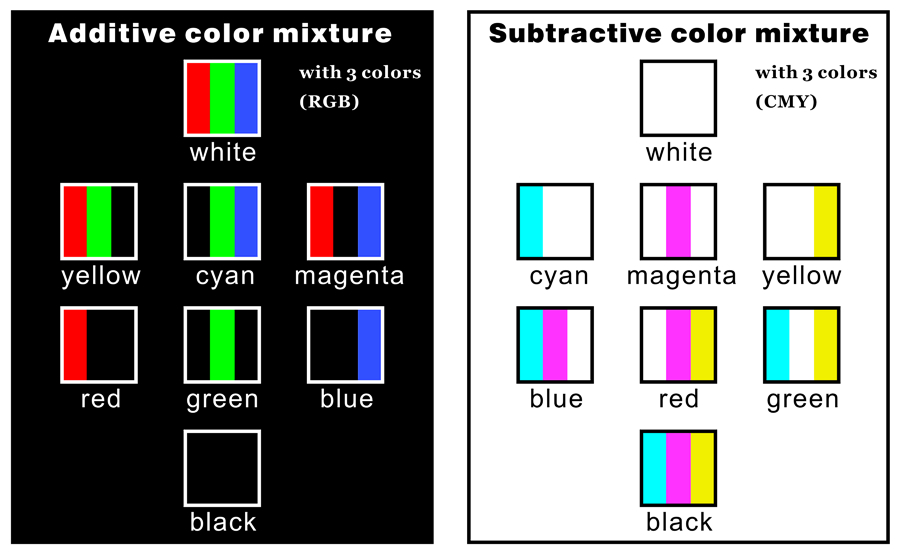
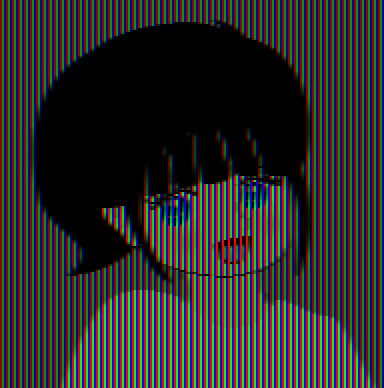


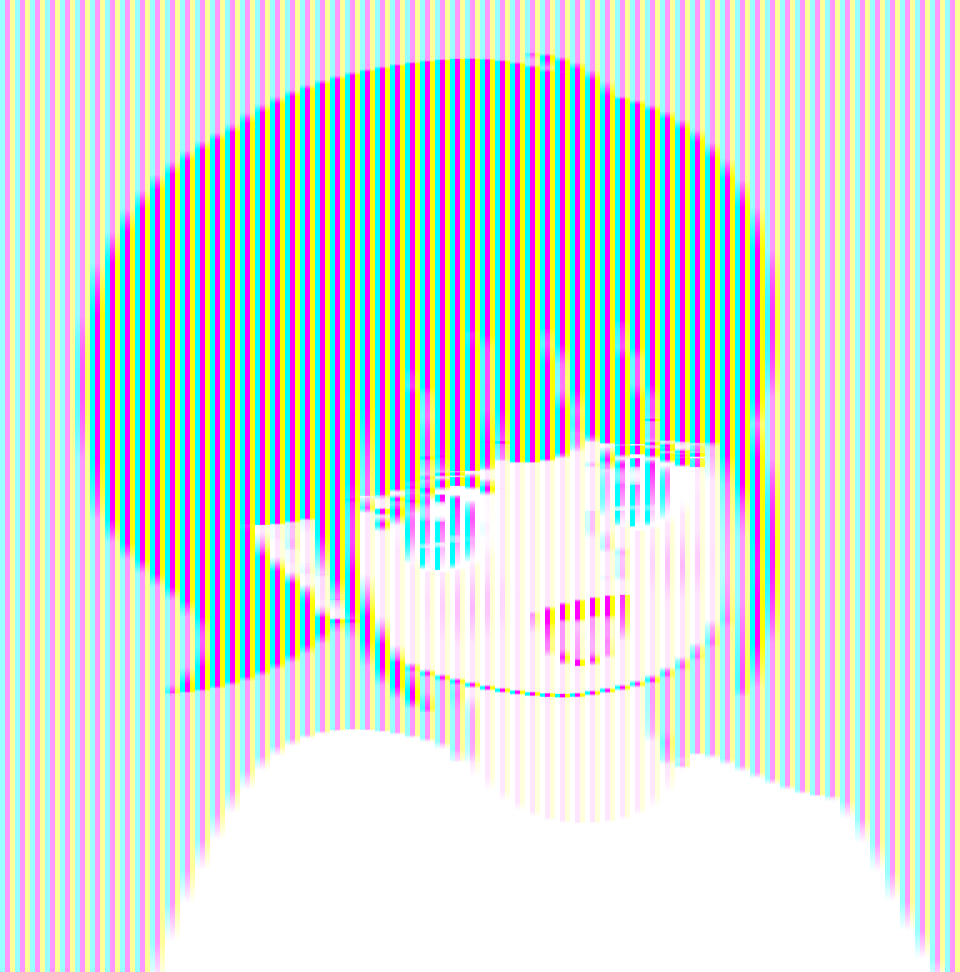
Spatial color mixture with two colors (red and cyan): additive color mixture (left) and subtractive one (right)
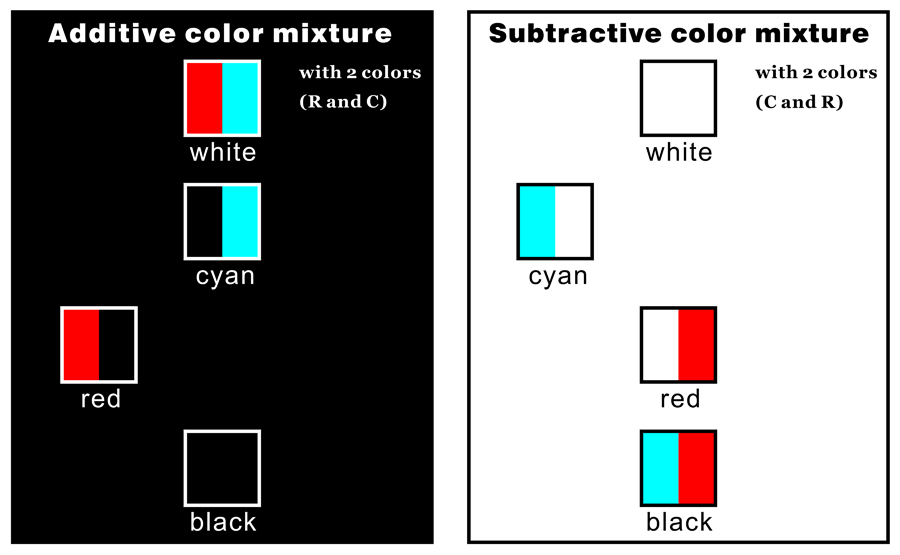
s.jpg)
s.jpg)
.jpg)
.jpg)
Supposed continuity of spatial color mixture and the Munker illusion. Black hearts appear to be red or cyan in the additive color mixture image (leftmost panel), while white hearts appear so in the subtractive color mixture image (rightmost panel). Moreover, gray hearts appear to be reddish or like cyan in the Munker illusion image (middle panel).

Red and cyan hearts with the additive color mixture
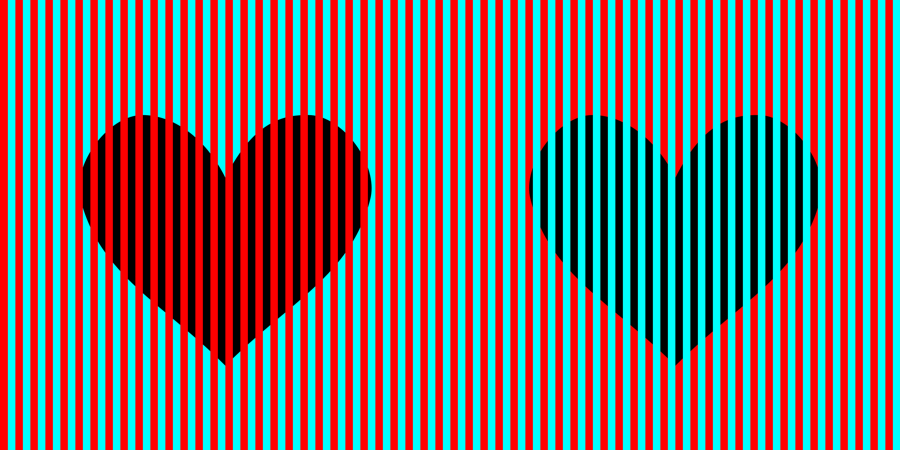
s.jpg)
Red and cyan hearts with the subtractive color mixture

s.jpg)
Red and cyan hearts with the Munker illusion

Munker illusion with three inducing colors: RGB (top) and CMY (bottom). In each, the left heart appears to be red-purple whereas the right one orange, though they are the same red.

"Munker illusion with RGB"
The left heart appears to be red-purple while the right one to be orange, though they are the same red.
Copyright Akiyoshi Kitaoka 2015 (August 6)

"Munker illusion with CMY"
The left heart appears to be red-purple while the right one to be orange, though they are the same red.
Copyright Akiyoshi Kitaoka 2015 (August 6)
cf.

Munker illusion: standard
The left heart appears to be red-purple while the right one to be orange, though they are the same red.
Copyright Akiyoshi Kitaoka 2015 (June 2)

"Lemon-yellow spiral and cream-colored spiral"
It appears as if there were a lemon-yellow spiral and a cream-colored spiral, but the colors are identical (= yellow: R255, G255, B0).
Copyright Akiyoshi Kitaoka 2005 (April 22) (remake August 18, 2015)

"Green spirals"
There appear to be spirals of two different types of green. Actually, they are identical.
Copyright A.Kitaoka 2002
end
cf.
s.jpg)
s.jpg)
"Girl with black hair and black cloth and girl with white hair and white cloth"
The apparent black hair and apparent black cloth are the same as the apparent white hair and apparent white cloth. They consist of red and cyan stripes. This difference in appearance depends on the difference whether the image reflects the subtractive color mixture or the additive one.
Copyright Akiyoshi Kitaoka 2015 (July 15)
Expanded images
b.jpg)
.jpg)
Further expanded images
bLp.jpg)
Lp.jpg)
The original images


s.jpg)
s.jpg)
blue-yellow image
s.jpg)
s.jpg)
green-magenta image
Copyright Akiyoshi Kitaoka 2015 (July 15)
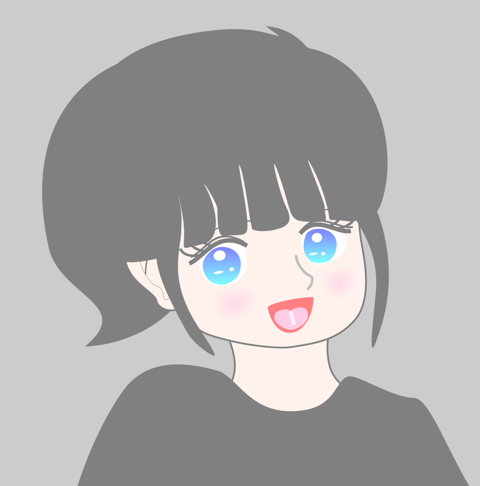

"Girl with black hair and black cloth and girl with white hair and white cloth: standard color constancy images"
The apparent black hair and apparent black cloth are the same gray (RGB=128,128,128) as the apparent white hair and apparent white cloth. This difference in appearance depends on the difference in lightness constancy.
Copyright Akiyoshi Kitaoka 2015 (July 16)
.jpg)
.jpg)
cf. Two-pixel (minimum) color mixture: The apparent black hair and apparent
black cloth are the same as the apparent white hair and apparent white
cloth. They consist of red and cyan stripes. This difference in appearance
depends on the difference whether the image reflects the subtractive color
mixture or the additive one.
bs-white2-RC(RGB)s.jpg)
bs-white2-RC(RGB)s2.jpg)
bs-white2-RC(RGB)s3.jpg)
bs-white2-RC(RGB)s3e.jpg)
Continuity between apparent black and apparent white
Copyright Akiyoshi Kitaoka 2015 (July 17)


"Girl with black hair and black cloth and girl with white hair and white cloth: figure-ground segregation images"
The apparent black hair and apparent black cloth are the same black and white stripes as the apparent white hair and apparent white cloth. This difference in appearance depends on the difference in figure-ground segregation.
Copyright Akiyoshi Kitaoka 2015 (July 16)

"Illusion that the mouth appears to be reddish when observed at a distance or when it is blurred"
The mouth appears to be black or dark when seen closely.
Copyright Akiyoshi Kitaoka 2015 (April 28)
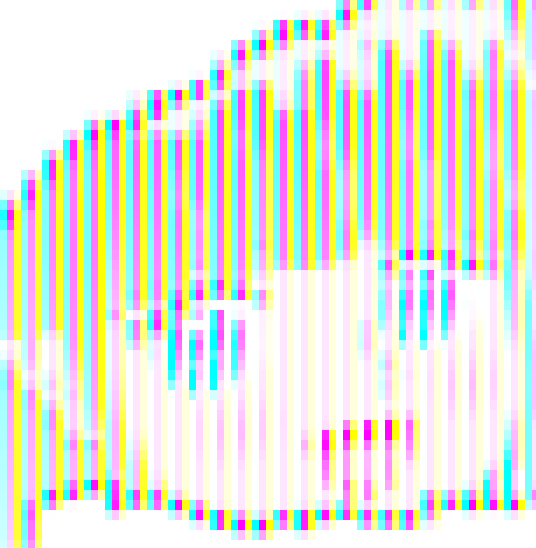
cf. CMY image

Spatial color mixture with three colors: additive color mixture (left) and subtractive one (right)


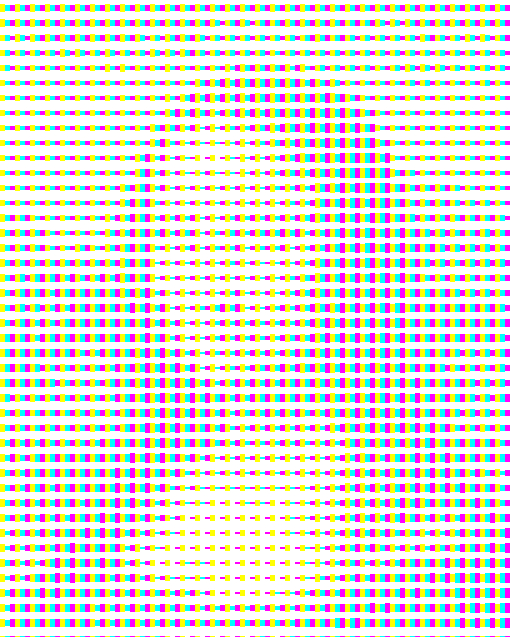


Spatial color mixture with two colors (red and cyan): additive color mixture (left) and subtractive one (right)
.jpg)
.jpg)
Spatial color mixture with three colors: additive color mixture (top) and subtractive one (bottom)



Copyright Akiyoshi Kitaoka 2015 (August 18)
This page has been translated into French by Mathilde Guibert.
<April 13, 2020>

Copyright Akiyoshi Kitaoka 2020 (April 13)